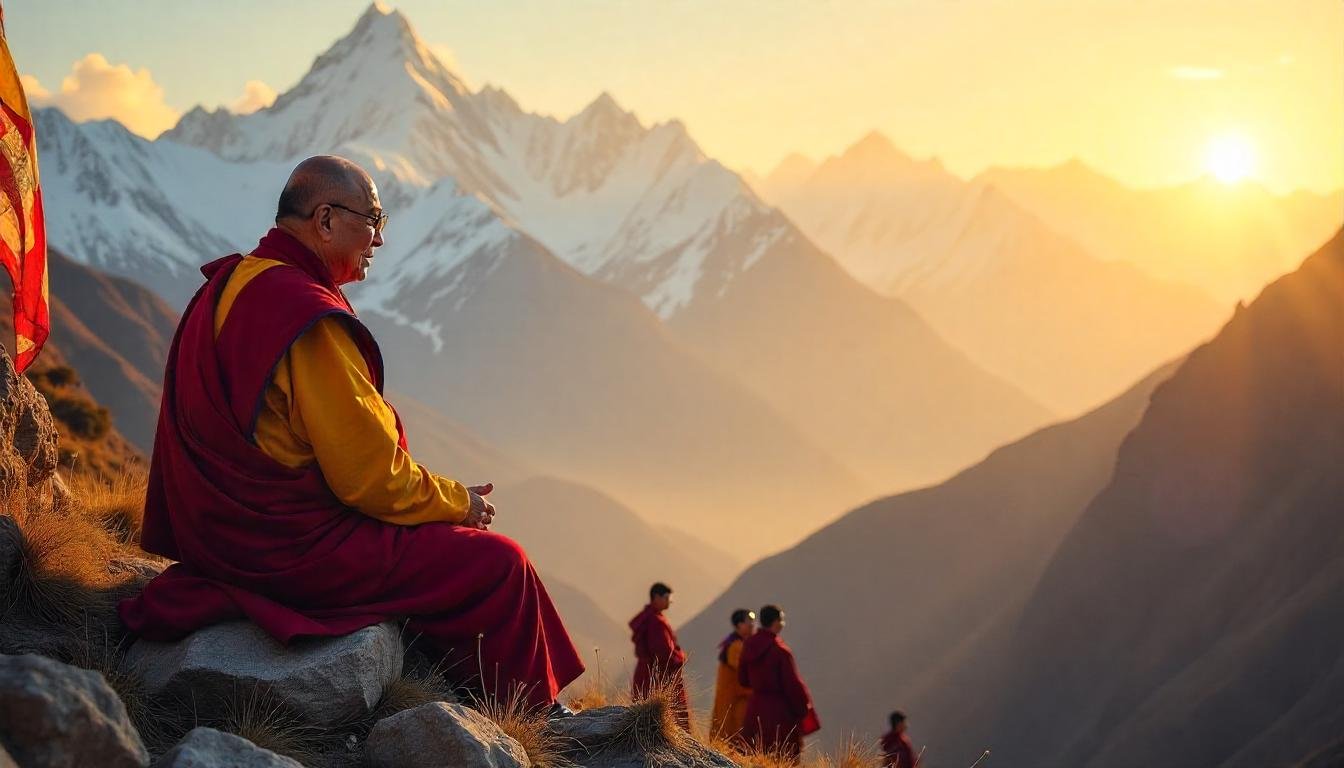As His Holiness the 14th Dalai Lama approaches his 90th birthday, the Tibetan community is at a turning point that is characterised by introspection, silent anxiety, and a great sense of thankfulness. The Dalai Lama has represented peace, tenacity, and spiritual direction for many generations. However, concerns regarding Tibet’s political and spiritual future are more pressing than ever as the spiritual head eventually ages.
A Lifetime of Leadership and Compassion
Tenzin Gyatso, who was born in 1935 in a remote town in northeastern Tibet, was identified at the age of two as the 13th Dalai Lama’s reincarnation. He has developed throughout the years into a worldwide symbol of knowledge, compassion, and nonviolence in addition to being a religious leader.
The Dalai Lama founded the Tibetan government-in-exile in Dharamshala after escaping to India in 1959 after the failed Tibetan rebellion against Chinese authority. Since then, he has relentlessly promoted the preservation of Tibetan culture, autonomy, and human rights while adopting a nonviolent and dialogue-based approach.
His teachings have had an impact much beyond the Tibetan plateau, and in 1989, he was awarded the Nobel Peace Prize for his work. However, despite the fact that millions of people around the world are still motivated by his teachings, the situation in Tibet is still extremely complicated.
The Weight of Uncertainty
The Dalai Lama’s impending 90th birthday is a time of silent concern for many Tibetans as well as a celebration of an extraordinary life. After him, what happens? After the Dalai Lama, who will guide, uplift, and bring the Tibetan people together?
Uncertainty clouds the succession process. Traditionally, a spiritual process supervised by senior lamas is used to determine a Dalai Lama’s reincarnation. China has, however, consistently said that it wants to regulate this process; it has even gone so far as to enact legislation mandating official clearance for reincarnated lamas.
This has raised concerns that the Chinese government would choose its own successor, causing a rift between the “Dalai Lama,” who is supported by China, and a prospective spiritual leader who is accepted by the Tibetan exile population. An already vulnerable population could become much more divided in such a situation, both inside Tibet and among the diaspora worldwide.
Youth and the Evolving Tibetan Identity
The way that younger Tibetan generations perceive their identity and destiny is another new difficulty. A large number of young Tibetans who were born in exile have never visited Tibet. The distance from the motherland might be felt, even when they are still connected by language, religion, and cultural events.
According to Lobsang, a Tibetan activist in India who is 27 years old, “His Holiness has always been the glue holding our identity together.” “However, we need to stop depending solely on one person and start considering what it means to be Tibetan.”
Tibetan communities around the world share this sentiment. A growing number of people are realising that a communal movement, based on lobbying, education, cultural preservation, and resilience, may be the source of leadership in the future rather than a single individual.
Looking Ahead: A Legacy of Hope
There is hope in spite of the uncertainties. With or without his presence, the Dalai Lama himself has urged the Tibetan people to prioritise compassion, unity, and secular ethics as guiding ideals. He has long emphasised the value of democracy and contributed to the creation of a framework in the exile government that allows it to operate apart from his spiritual role.
The Dalai Lama actually formally gave up his political duties in 2011, handing up power to the Sikyong, a democratically chosen leader. This action was a blatant indication that the Tibetan people themselves must continue the cause.
A Global Concern
The future of Tibet is now a human matter, not just a Tibetan one, as the world observes. Millions of people have been impacted by the Dalai Lama’s life, and issues of religious freedom, cultural preservation, and human dignity are all entwined with the debate over his succession and the future of Tibet.
The Tibetan people, both in the occupied homeland and in the diaspora, will need to find their way in the years to come without the daily presence of the man who has led them for almost a century. It won’t be simple. However, if his teachings are any guide, that journey will be filled with bravery, compassion, and the unwavering conviction that peace is always achievable.
In addition to commemorating a life of wisdom, the world pauses as His Holiness turns 90 to reflect on the future of one of the most resilient and spiritually rich societies on earth.
